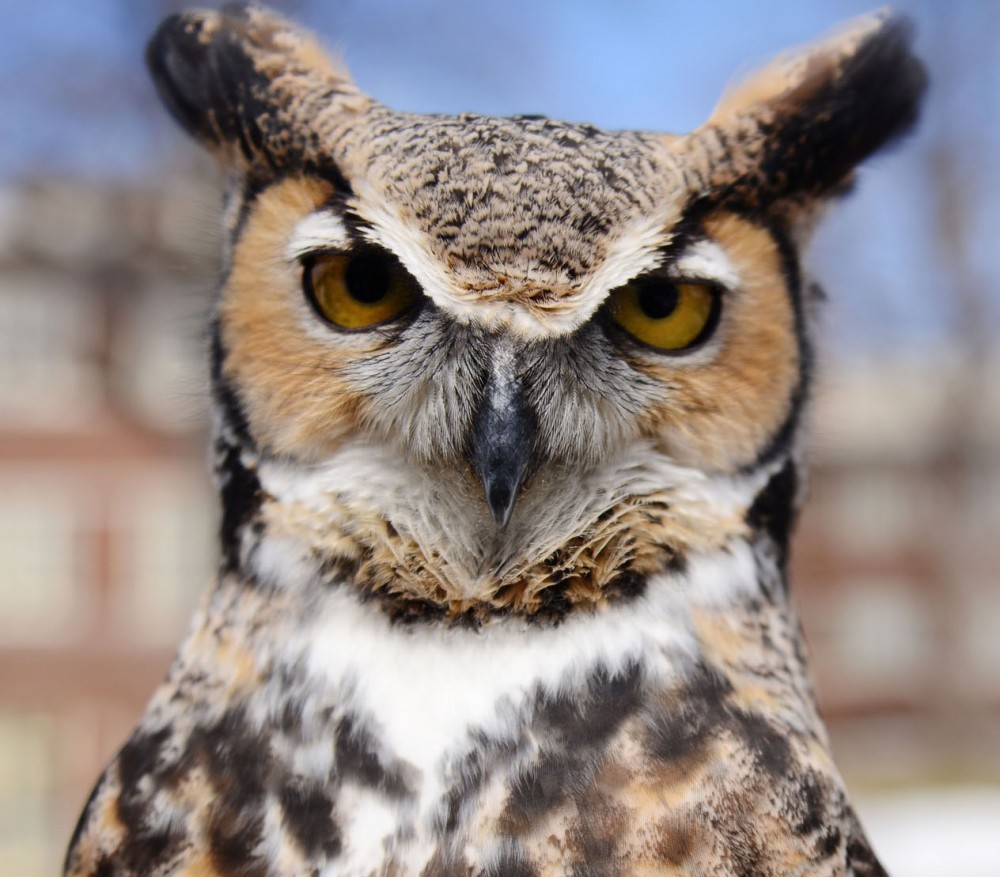Bubo, a great horned owl, is physically healthy, but he cannot be released from his home at the University of Minnesota Raptor Center.
The owl has spent most of his 12 years in captivity and can’t be released because he was overexposed to humans as an owlet.
When newly hatched birds spend too much time around humans, it causes an irreversible mental condition known as imprinting, said Adam Barnett, an interpretive naturalist at the Raptor Center.
Great horned owls begin to hatch in March, initiating baby raptor season.
After birds start hatching, the Raptor Center receives phone calls from people throughout Minnesota who find baby raptors on the ground or in their backyards, said Lori Arent, the Raptor Center’s clinic manager.
By the middle of August, the center will have received hundreds of calls, said Arent, who is in charge of the center’s work with baby raptors.
Arent said callers are often concerned the hatchlings have been abandoned or injured, which she said is rarely the case. Usually, they have fallen from a nearby nest.
Raptor Center staff or volunteers give callers advice or visit the baby raptors to rebuild their nests and put them back in their trees.
If they can’t put the baby raptor in its original nest, the center’s staff will put them in a different nest of a bird of the same species nearby, Arent said, a practice known as fostering.
“This works well because the raptors have a poor sense of smell and can’t count, so they don’t know they have an extra baby,” she said.
Arent said the center maintains records of raptor nests in the area and networks with nearby residents to find new homes for the hatchlings.
In more serious cases — like potential injuries — center staff members bring the hatchlings into the clinic to give them a physical and then reunite them with their parents back in the wild, said Greg Hansen, the Raptor Center’s senior veterinary technician.
Because baby raptors are vulnerable to imprinting, the staff works quickly to minimize human interaction, Hansen said.
Imprinted raptors can show aggression toward humans during mating season and won’t interact correctly with members of their own species, making it difficult for them to succeed in the wild, Hansen said.
If the hatchling is in the clinic for an extended period, Hansen said he ensures it stays within sight of a bird of its own species so it doesn’t imprint on humans.
Because of the baby raptors’ “cute” appearance, Arent said many people feel the need to help them but often do more harm than good.
“Most people have really good intentions, but there’s so much to know to keep them healthy,” Arent said.
Bubo, the great horned owl, fell from his nest after hatching in southwestern Minnesota in 2000.
A nearby resident took the owlet in and tried caring for him, Barnett said, which prevented Bubo from learning how to act like his own species.
Now the owl is trained to be one of the center’s 32 educational birds for visitors and local schools, which is common for imprint birds, Arent said.
But if a raptor is too aggressive toward humans, Arent said training it as an educational bird is out of the question.
“A bird like that is pretty much doomed to a life of captivity,” Arent said. “That’s not the type of life we want them to have.”
Hansen said if people see a baby raptor on the ground, they should call the Raptor Center before intervening.
“Our main goal with the baby season,” Arent said, “is to really educate the public and help us to keep the birds wild.”











